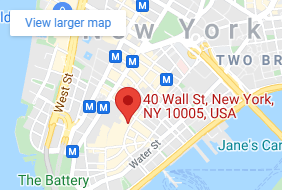Is Lane-Splitting Legal in New York?
Riding a motorcycle offers many practical advantages. For example, motorcycle riders often have an easier time finding parking spaces. Furthermore, motorcycles tend to be far more fuel-efficient than larger vehicles. However, one of the most significant physical advantages motorcycles have over passenger vehicles is the ability to lane-split. But is lane-splitting legal in NY? Here is what you need to know about motorcycle lane-splitting in NYC.
What Is Motorcycle Lane-Splitting?
Lane-splitting, also known as white-lining or stripe-riding, refers to a motorcyclist riding between adjacent rows of stopped traffic or slowly moving traffic heading in the same direction in designated traffic lanes. It allows motorcyclists to make progress through a traffic jam or other congested traffic conditions by passing cars while using the space between other vehicles.
Is Motorcycle Lane-Splitting Legal in New York?
Lane-splitting is illegal in New York State. According to the relevant lane-splitting statute, New York law forbids operating a motorcycle between lanes of traffic or rows of vehicles. Furthermore, the law bans New York motorcyclists from overtaking or passing in the same lane as the vehicle being passed. The only exception to these rules is for police officers performing their official duties.
Because law enforcement generally considers lane-splitting to be an unsafe and illegal maneuver, anyone observed lane-splitting may face such penalties as fines, jail time, and points on their driver’s license. Specific penalties may depend on the context in which the lane-splitting occurred.
A lane-splitting motorcyclist could also be found at fault for a crash that results from the behavior.
Other Laws New York Motorcycle Riders Need to Know
In addition to the prohibition on lane splitting, there are other key laws that motorcyclists in New York should be aware of:
- Eye protection – Riders must wear eye protection such as goggles or a face shield, even if the motorcycle has a windshield.
- Handlebar mirror – A motorcycle must have at least one mirror mounted on a handlebar to be considered street-legal.
- Headlights – Motorcycles must have headlights illuminated at all times.
- Helmet law – All motorcycle operators and passengers must wear protective helmets that meet safety standards.
- Horn – Motorcycles must be equipped with a horn or other warning device.
Adhering to these and other traffic laws helps reduce risks and keeps all road users safe. Violations may lead to fines, license suspension, and other penalties.
Contact Our New York City Motorcycle Accident Lawyer for Help
New York motorcycle laws are there to keep riders and other road users safe from accidents. Abiding by these rules can significantly reduce the risk of suffering injuries in a motorcycle crash. However, even the most conscientious and law-abiding motorcyclists can still be involved in accidents if another party behaves negligently or recklessly.
If you have suffered injuries in a motorcycle accident, the experienced New York City motorcycle accident lawyers at the law firm of Finz & Finz, P.C. want to help you recover compensation for medical expenses, lost income, and other losses resulting from the accident. We have fought tirelessly for injured New Yorkers for over 40 years, and we will do what it takes to protect your rights.
Contact us for a free consultation today to learn more about how we can help you seek compensation.




























